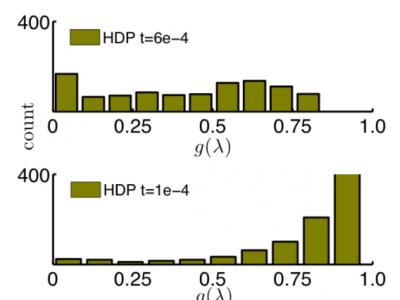Documents
Presentation Slides
High-order Tensor Pooling with Attention for Action Recognition

- DOI:
- 10.60864/v32t-ps26
- Citation Author(s):
- Submitted by:
- Lei Wang
- Last updated:
- 6 June 2024 - 10:54am
- Document Type:
- Presentation Slides
- Document Year:
- 2024
- Event:
- Presenters:
- Lei Wang
- Paper Code:
- IVMSP-L11.1
- Categories:
- Log in to post comments
We aim at capturing high-order statistics of feature vectors formed by a neural network, and propose end-to-end second- and higher-order pooling to form a tensor descriptor. Tensor descriptors require a robust similarity measure due to low numbers of aggregated vectors and the burstiness phenomenon, when a given feature appears more/less frequently than statistically expected. The Heat Diffusion Process (HDP) on a graph Laplacian is closely related to the Eigenvalue Power Normalization (EPN) of the covariance/auto-correlation matrix, whose inverse forms a loopy graph Laplacian. We show that the HDP and the EPN play the same role, i.e., to boost or dampen the magnitude of the eigenspectrum thus preventing the burstiness. We equip higher-order tensors with EPN which acts as a spectral detector of higher-order occurrences to prevent burstiness. We also prove that for a tensor of order r built from d dimensional feature descriptors, such a detector gives the likelihood if at least one higher-order occurrence is `projected' into one of binom(d,r) subspaces represented by the tensor; thus forming a tensor power normalization metric endowed with binom(d,r) such `detectors'. For experimental contributions, we apply several second- and higher-order pooling variants to action recognition, provide previously not presented comparisons of such pooling variants, and show state-of-the-art results on HMDB-51, YUP++ and MPII Cooking Activities.

